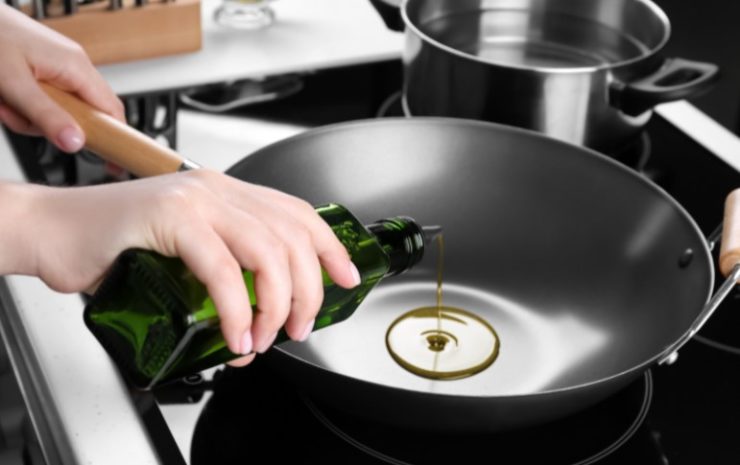1 to 2 tablespoons of oil per serving is a good place to start for a lot of stir-fries. And while I wish it was as simple as that, there’s a bit more to the story.
I’ve been a professional chef for over a decade and several of those years were spent tossing stir-fries on the wok station. And one thing you learn is that different stir-fries and different ingredients require different amounts of oil. You also quickly learn that there’s no time to pull out your trusty tablespoon during a busy dinner service!
But, by paying attention to your ingredients and your pan, I’ll show you how to use the right amount of oil for stir fry and become a better cook in the process.
In This Article
The Importance Of Oil In A Stir Fry
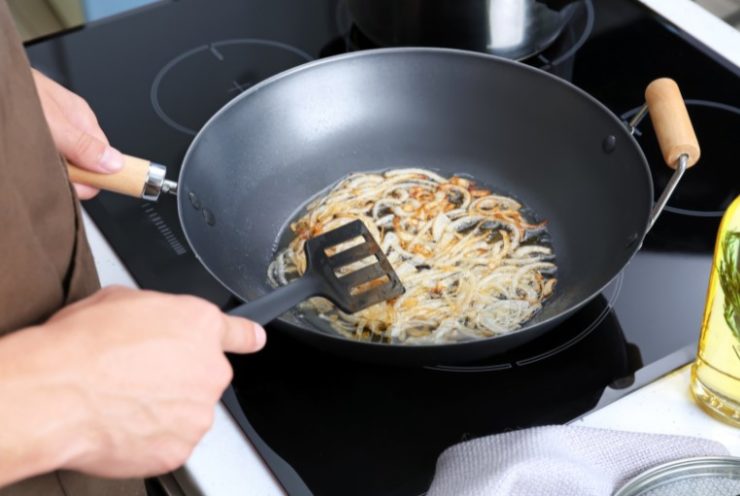
There are several different factors that go into a great stir fry but I like to think of the cooking oil as the glue that brings everything together. Ok, so maybe glue isn’t the best metaphor since oil actually keeps things from sticking, but you get the idea.
Oil plays two primary roles in a stir fry. One is to create a barrier between the wok (or other pan) and the ingredients you’re cooking. That barrier will help keep food from sticking and burning.
Second, oil acts as a cooking medium that coats ingredients and raises the cooking temperature. This helps with browning and even cooking, while also protecting them from burning.
If you were to use water in place of oil, you would be limiting the cooking temperature to around 212 F (the boiling point of water). That’s not hot enough for caramelization or the Maillard reaction (protein browning). So while your food would still cook, it would most likely be soggy, drab, and tough.
Since oil lets you cook at temperatures between 300-400 F or more, ingredients can cook faster while also caramelizing and browning. And that leads to better flavor and texture in your stir fry.
Some Ingredients Need More Oil Than Others
While 2 tablespoons of oil per serving is a solid guideline for stir fry cooking, some ingredients can require a lot more or sometimes a lot less. So, thinking a little about the ingredients you’re working with can save you from a greasy meal or wok full of burnt food.
More Oil
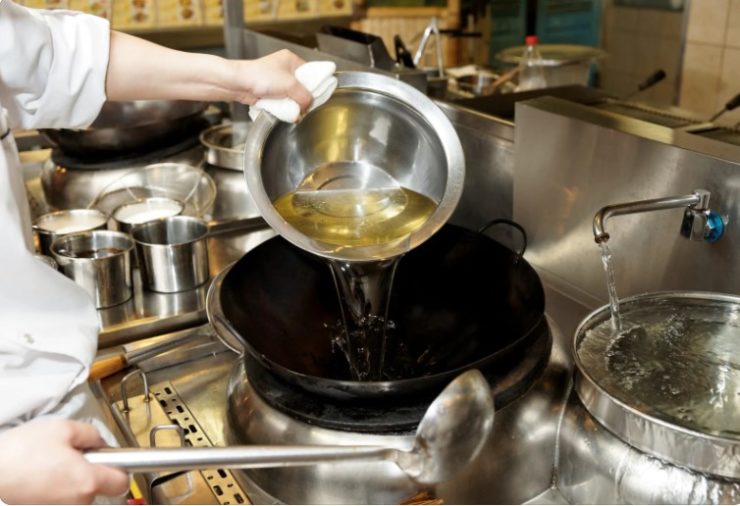
Ingredients that are dry or simply absorb a lot of liquid are the ones where you’ll want to bump up the oil a bit. That would be things like rice, mushrooms, and broccoli, or cauliflower. I would also throw low-fat proteins like chicken breast, lean fish, and tofu into this category.
Those are all ingredients that will quickly absorb oil and can leave your pan dry and prone to sticking and burning. Now, we’re not deep frying so we also don’t want our food swimming in a pool of oil.
Instead, start with your baseline of 1-2 tablespoons and add small amounts of oil if you see your pan has become completely dry.
Less Oil
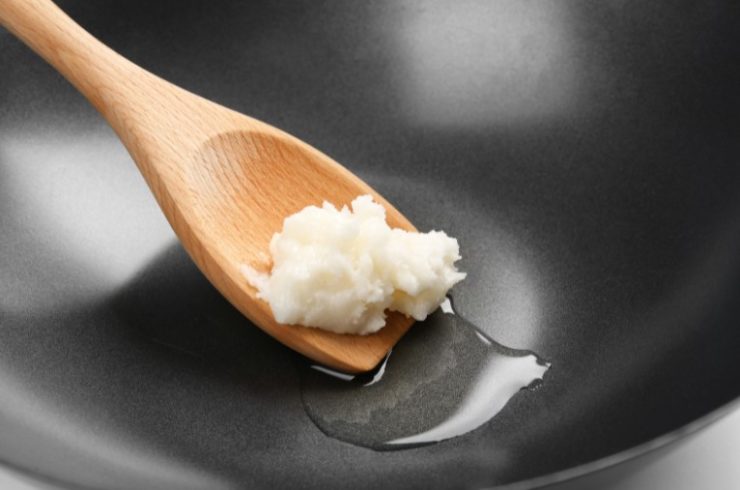
On the other hand, ingredients that are very dense or have a high-fat content can often be cooked using minimal amounts of cooking oil. Here we’d be looking at things like green beans, asparagus, cabbage, peppers, and snow peas. As well as high-fat proteins like pork belly, rib eye, or sausage.
The vegetables in this category are easily coated by a small amount of oil and won’t absorb much excess. And when it comes to high-fat proteins, they will actually release their own fat into the pan. So, using just enough oil to coat these ingredients and the pan is usually your best bet.
Keep Your Wok HOT
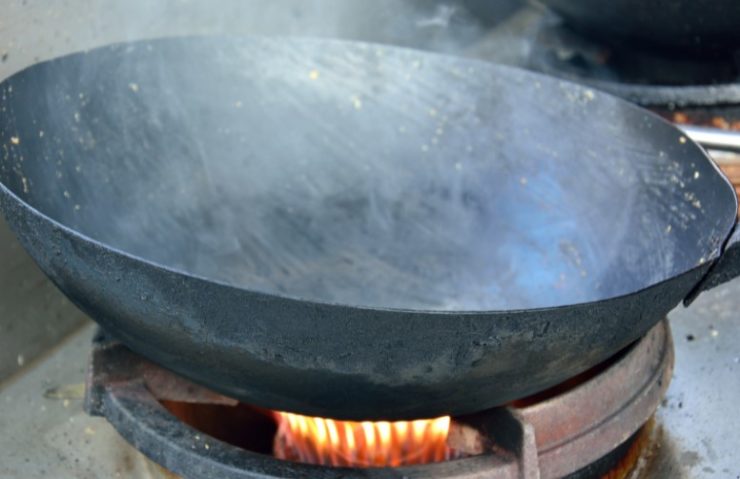
I say “wok” because it’s the perfect stir fry pan, but the same goes if you’re using a saute pan or skillet.
The temperature of your wok is another important factor that goes hand in hand with your cooking oil. If your wok and oil are not hot enough, you’re probably going to end up steaming your food. And we’re not stir-steaming here…
You should always preheat your wok over medium-high to high heat and then add your oil. If your wok is hot enough, the oil will also be ready in a matter of seconds. You’re looking for ripples in the oil or faint wisps of white smoke.
If you’re using your everyday stovetop for your stir fry, you can likely keep the heat cranked for the entire cooking process. If you’re using something with a little more power, like an outdoor wok burner, you may need to regulate the temperature a bit more.
In general, there should be pretty aggressive sizzling happening the entire time. And there shouldn’t be any liquid pooling in the pan unless it’s the sauce you’ve added at the end of the cooking process.
Choosing The Right Oil
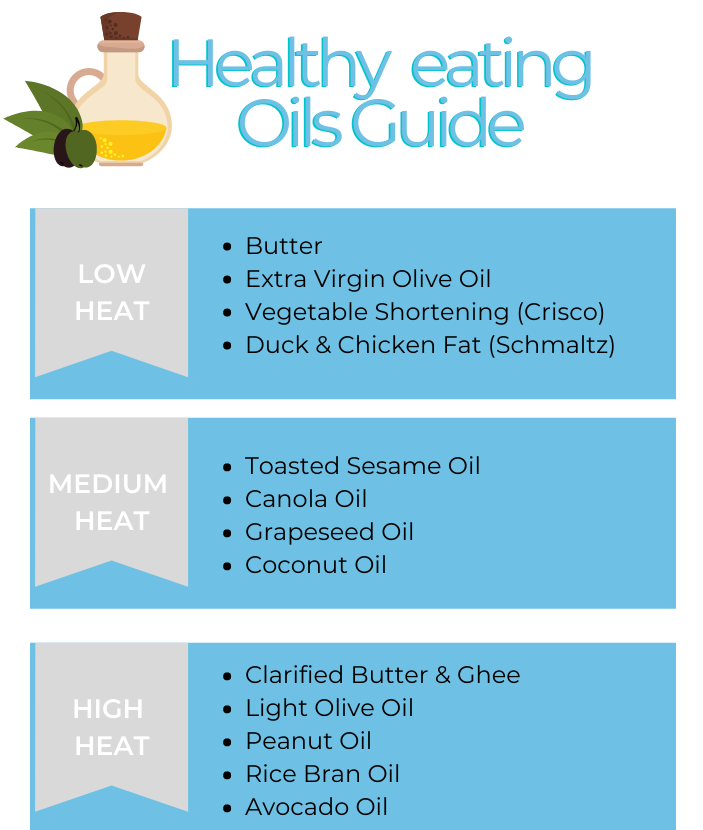
Once you have a good idea of how much oil to use for stir fry, it’s important to choose the right oil for the job. Luckily, this is pretty straight forward and there are plenty of options to choose from.
The main rule to follow when choosing the best oil for your stir fry is to use an oil with a high smoke point. A high smoke point means that the oil can be heated to high temperatures ( at least 400 F) before it starts to break down and burn.
Most vegetable oils are fine for the task. My personal go-to’s are grapeseed or peanut oil, but you can also use something like canola, corn, or avocado oil.
You want to avoid low smoke point oils like extra virgin olive oil, which will quickly burn if you’re cooking over high heat. And while toasted sesame oil is an excellent addition to most stir-fries, it also has a low smoke point. So, save that for the end of the cooking process or even off the heat all together.
Final Thoughts
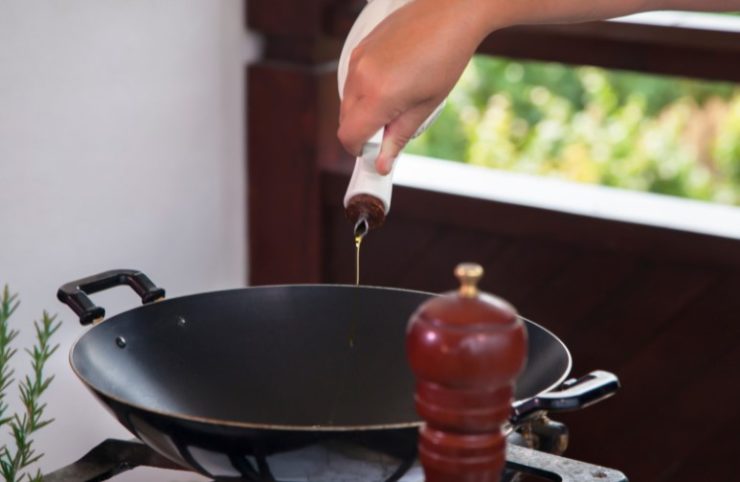
The “right” amount of oil for stir fry varies from dish to dish and ingredient to ingredient. In general, your food and your pan should be lightly coated in oil. They shouldn’t be swimming in it but your pan also shouldn’t be bone dry.
While 1 or 2 tablespoons per serving is a good place to start, it’s important to pay close attention to what you’re cooking and adjust the oil as needed. And don’t worry, if things don’t go quite right, we’ve got a guide to cleaning a wok with burnt food.
Frequently Asked Questions
What Kind Of Oil Should I Use For Stir Fry?
Just about any high heat cooking oil will work well for stir fry. Canola, grapeseed, and peanut oil are all great options that have smoke points above 400 F. Avoid low smoke point oils like extra virgin olive oil or butter, which can easily burn at high temperatures.
What’s The Best Kind Of Pan For Stir Fry?
A wok is the ultimate stir fry pan. They are perfectly shaped to toss ingredients and quickly cook a stir fry very evenly. Carbon steel woks are the pan of choice for most professionals, but you can also get the job done with a sauté or frying pan.
Can You Make Stir Fry Without Oil?
It is possible to stir fry without oil but it can be difficult and the results are generally not as good. You can use small amounts of water or stock in place of oil, but this leads to a steaming effect where very little if any caramelization will occur.
